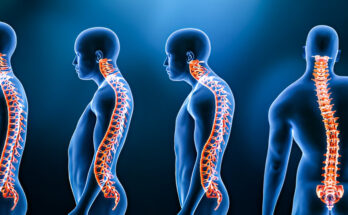Table of Contents
- Introduction:
- Beyond Physical Fitness
- Why Mindful Movement Matters
- The Science Behind Mindful Movement
- Principles of Mindful Movement
- Types of Mindful Movement Practices
- Building Your Mindful Fitness Routine
- Benefits of Mindful Movement for Mental Health
- Modern Trends in Mindful Movement
- Tools to Support Mindful Movement
- Conclusion:
- Move with Purpose, Live with Joy
Introduction: Beyond Physical Fitness
Fitness isn’t just about how you look; it’s about how you feel—inside and out. In today’s fast-paced world, the connection between physical exercise and mental health is more vital than ever. Enter the concept of mindful movement, a fitness approach that blends physical activity with mental and emotional well-being. It’s not just about sweating; it’s about moving with purpose and awareness, creating a routine that nourishes both the body and mind.
This blog will guide you through the principles of mindful movement, its benefits, and how to create a fitness routine that supports mental health, offering a new perspective on achieving holistic wellness.
Why Mindful Movement Matters
Traditional fitness routines often focus solely on physical goals like weight loss or muscle gain, neglecting the mental and emotional benefits of exercise. Mindful movement shifts the focus, emphasizing the importance of:
Reducing Stress: Mindful exercise reduces cortisol levels and promotes relaxation.
Boosting Mental Clarity: Moving with intention enhances focus and mindfulness.
Enhancing Emotional Well-Being: Physical activity releases endorphins, improving mood and combating anxiety.
Creating Sustainable Habits: A mindful approach encourages consistency and enjoyment, making fitness a lifelong practice.
The Science Behind Mindful Movement
The mind-body connection is not just a wellness buzzword; it’s backed by science. Here’s how mindful movement works:
Neurotransmitter Boost: Exercise increases dopamine and serotonin, essential for mood regulation.
Stress Reduction: Physical activity lowers stress hormones, promoting a calmer state of mind.
Mindfulness Practice: Engaging in movements that require focus, like yoga or tai chi, enhances mindfulness, reducing anxiety and depression.
Improved Sleep: Regular exercise supports better sleep quality, which is crucial for mental health.
Principles of Mindful Movement
To embrace mindful movement, consider these key principles:
1. Intention Setting
Start each workout by setting an intention. Whether it’s to release stress, feel energized, or simply enjoy the moment, a clear purpose can transform your experience.
2. Body Awareness
Pay attention to how your body feels during each movement. Notice areas of tension, alignment, and how your breathing supports your activity.
3. Breath Integration
Use your breath as an anchor. Deep, rhythmic breathing not only improves performance but also keeps your mind grounded in the present moment.
4. Embracing Stillness
Incorporate moments of stillness and reflection, such as a cooldown or meditation, to close your workout with a sense of calm and gratitude.
Types of Mindful Movement Practices
Mindful movement can be incorporated into various forms of exercise. Here are some popular practices:
1. Yoga
Combining physical postures with breath control and meditation, yoga is a quintessential mindful movement practice. It promotes flexibility, strength, and mental clarity.
2. Tai Chi
Often described as “meditation in motion,” tai chi involves slow, deliberate movements that enhance balance, focus, and relaxation.
3. Pilates
Pilates emphasizes core strength, alignment, and controlled movements, fostering body awareness and concentration.
4. Walking Meditation
A simple yet powerful practice, mindful walking involves paying attention to each step, your surroundings, and your breathing.
5. Dance
Whether it’s ballet or freestyle, dance allows for self-expression and connection to the body through rhythm and movement.
Building Your Mindful Fitness Routine
Creating a fitness routine that prioritizes mental health doesn’t have to be complicated. Follow these steps to design a practice that works for you:
1. Start Small
Begin with short, manageable sessions to build consistency without feeling overwhelmed.
2. Mix It Up
Incorporate a variety of activities to keep things interesting and address different aspects of fitness—strength, flexibility, and endurance.
3. Prioritize Enjoyment
Choose activities that genuinely bring you joy. Whether it’s dancing, hiking, or yoga, loving what you do ensures long-term commitment.
4. Schedule Regular Breaks
Rest days are essential for recovery and mental rejuvenation. Listen to your body and give it the time it needs to heal.
5. Track Your Progress
Keep a journal to note how you feel before and after each session. This practice builds awareness of the mental benefits of exercise.
Benefits of Mindful Movement for Mental Health
Mindful movement offers a plethora of mental health benefits, including:
Reduced Anxiety and Depression: Regular exercise acts as a natural antidepressant, improving mood and reducing anxiety.
Increased Focus and Clarity: Mindful practices enhance cognitive function and concentration.
Better Emotional Regulation: Engaging in mindful movement helps manage emotions more effectively.
Improved Resilience: Physical activity boosts self-confidence and the ability to handle stress.
Modern Trends in Mindful Movement
As mindfulness becomes mainstream, several trends are shaping how we approach fitness:
1. Wearable Technology
Fitness trackers and smartwatches now feature mindfulness metrics, such as guided breathing exercises and stress monitoring.
2. Virtual Classes
Apps and online platforms offer guided yoga, meditation, and fitness classes, making mindful movement accessible to all.
3. Hybrid Workouts
Combining traditional fitness with mindfulness practices, hybrid workouts like mindful HIIT or yoga-flow sessions are gaining popularity.
4. Community-Based Programs
Group classes and community events encourage social connection, enhancing the mental benefits of exercise.
Tools to Support Mindful Movement
Equip yourself with tools that can enhance your mindful fitness experience:
Yoga Mats: For comfort and stability during practice.
Resistance Bands: For controlled, mindful strength training.
Meditation Cushions: To support seated mindfulness exercises.
Fitness Apps: Offering guided sessions and progress tracking.
Music Playlists: Curate calming or uplifting music to match your workout mood.
Conclusion: Move with Purpose, Live with Joy
Mindful movement is more than a workout; it’s a lifestyle. By integrating awareness, intention, and joy into your fitness routine, you’ll not only enhance your physical health but also create a profound sense of mental and emotional well-being. In a world where stress and distractions are constant, mindful movement offers a grounding, empowering path to holistic health.




